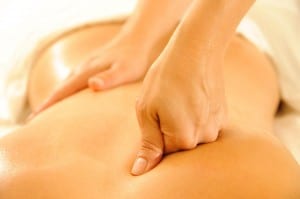Kennetics is an approach to massage therapy which combines three powerful modalities.
The first is trigger point therapy. I have been practicing clinical trigger point therapy for 20 years. Trigger points are well-accepted and effective means, developed especially by Dr. Janet Travell, President Kennedy’s physician, to treat musculo-skeletal problems.
The second modality that is part of Kennetic massage is a unique method of stretching. Research has shown that deep work accompanied by stretching is more effective and longer-lasting in its benefits. Particularly useful is The Mattes Method of Active Isolated Stretching also incorporates the ability of controlling and minimizing the activation of the body’s defense stretch reflexes at the level of the muscle spindles and Golgi bodies. By having the patient initiate the movement, a reflexive relaxation of the antagonistic muscle ensues. The continuation of that movement in the proper plane at end range with a slight pressure of less than one pound within a two-second interval will allow the muscle tissue to continue stretching without any co-contraction.
Last but not least Kennetics incorporates the Strain-Counterstrain technique of placing the client in the most comfortable and pain free position possible to begin with by utilizing bolstering or just having the client in a position other than anatomical prone or supine only.
Kennetic Massage, by taking these various techniques and formulating them into a single technique, has shown great results in diminishing pain patterns, and soft tissue dysfunction for clients. It is very effective in Range of Motion Issues (ROM) from Repetitive Injury Syndrome (RIS), and everyday occurrences that can leave a person in a physically dysfunctional state from soft tissue problems. Kennetic Massage has been used on clients with symptoms of Carpal Tunnel Syndrome, Sciatica, Shoulder Stiffness, Stiff Neck to name a few, with excellent results. The additional advantage of the Kennetic Massage Technique is that it is ergonomically sound and very easy on the therapist, thus allowing the therapist to practice massage with less effort and less risk of injury to themselves and their clients.

